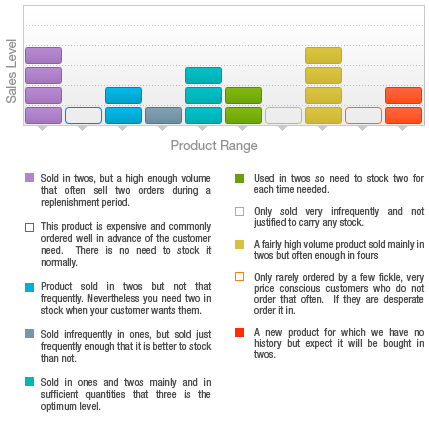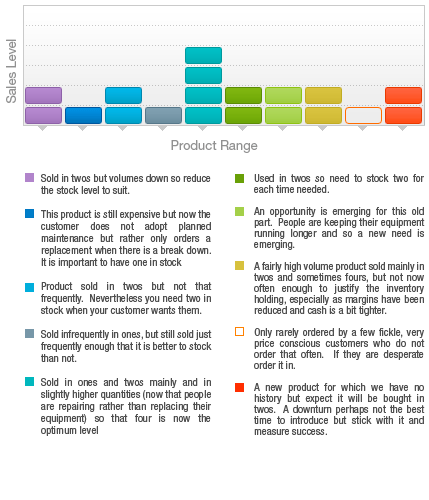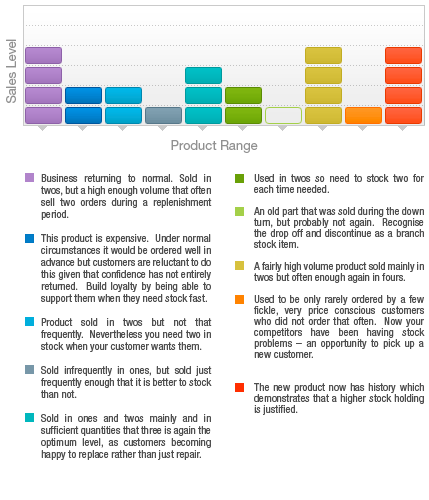How can I set the right branch or store inventory levels as business conditions change?
In normal times …
In the normal course of business you will probably have:
- Some items that are sold in reasonable volume, but a lot more that are sold or used relatively infrequently for breakdowns and repairs.
- Some products that might be very expensive that are ordered well in advance by customers so you don’t need to carry stock.
- Some items sold in twos (and maybe fours) where you either carry none, two or four, but not one or three.
Your processes and systems are hopefully balancing the need for service levels, profitability and return on assets and getting the inventory range and depth decisions fairly right. You are comfortable with your inventory levels and the number of emergency orders when you do not carry the stock.

What happens (and should happen) during a down turn?
Risk needs to be avoided. Every dollar of inventory investment has to be stretched as far as possible. True for you, but also true for your customer.
Customers and users experience falls in the demand for the products and services. Larger OEM sales fall off. Production capacity and utilisation is less important. It is less important to conduct planned maintenance and there is a shift to breakdown repair. You are expected to stock vital parts and supply them quickly to even remote customers.
You may actually need to increase stock levels for some products (you might even see a revival of some older parts). In general however you will need to supply a broader range of parts at least in sufficient (although smaller) quantities to get the customer’s machinery and equipment back on line.

What response is needed as the economy recovers?
Customers and you will probably be fairly risk averse. There will be a reluctance to invest until confidence returns.
However now is the time of opportunity:
- Build on the customer loyalty generated as you ‘stuck together’ during the downturn.
- Some of your competitors will have struggled. Use your superior market and business intelligence and ability to get inventory depth and range right to create new customer relationships.
- Accelerate new products into the market.
- Retire the older lines that will no longer be needed, and use your cash for growth.
Does it sound hard to do all these things with one system? It needn’t be. micq-if can help you manage:
- New ordering and carrying costs as business conditions change. What is right in one part of the business cycle, may not be in another and micq-if can help you adjust relatively automatically. In a downturn you may be happier to do replenishments more frequently. In an upturn interest rates will rise, and your spare capacity will be reduced.
- New service level targets and customer order lead time profiles – they may want products faster than normal, or they may shift to a planned maintenance approach giving you time to get the stock to them.
- New profitability and return on assets targets. At all times you want to make every dollar go as far as possible but especially when cash is tight. You also don’t want to have your people tied up manually overriding system generated min-maxes when a broad policy change is needed.
- Automatically recognise and shift pockets of excess as your existing inventory holdings cope with changes across your network … it is hard to get it perfect, but …
micq-if can help improve your ability to anticipate and respond to business changes, and to do so better than others. Why not get on the front foot?
See also:
